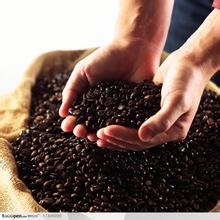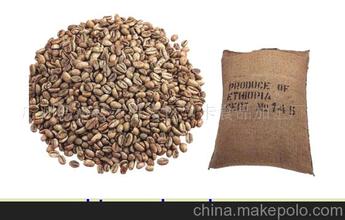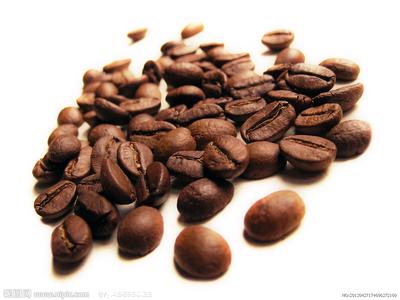Introduction to the origin and variety of Geisha, also known as geisha coffee beans
Introduction to the origin and variety of Geisha, also known as geisha coffee beans
The dry aroma of Rosa is very bright, with aromas of rose and jasmine, with aromas of pomelo and citrus, light baked with nutty aromas, and wet aromas with hazelnut and more floral characters. In terms of taste and flavor, compared with the previously rising aroma, it may be slightly mild and subtle in the early stage, and the flower and fruit flavor will gradually increase as the temperature drops, and the cold aroma is excellent (sweet preserved fruit, rose fruit, orange glaze jam, strawberry jam, silk pine, cherry, vanilla and rose gradually fade, leading to lemon-flavored fruit). This is a coffee that can be praised by a large number of adjectives, the sweetness of the silk, which is testing the brightness of this coffee, especially when it is lightly roasted.
The producing area of geisha coffee
Panamanian Jade Manor Panama Jade Manor-Esmeralda Manor (Panama Geisha Hacienda La Esmeralda)
In the early years, the identification of top coffee mostly followed Japan, while Geisha, with its hurricane-like power, swept the coffee world, and the coffee revolution was so menacing that the blue mountains of Jamaica and Kona of Hawaii, which had occupied the throne of the coffee kingdom for a long time, also had to retreat. This wild species, which originated in Ethiopia, is now widely used in major coffee producing areas after numerous battles. And its best spokesman is the "La Esmeralda" manor from Panama, Esmeralda's rose summer coffee is the most famous coffee in the rose summer variety.
The geisha of La Esmeralda became world-famous coffee by accident. Retired Swedish banker Rudolph A. Peterson bought the Jade Manor in Panama to spend his twilight years. Unexpectedly, the coffee trees in the manor bore fruit and sent them to participate in the coffee competition. As a result, they became famous in World War I. Won the national championship of the Panamanian boutique coffee competition in 2004.
Rose Xia won the championship again, and the bidding price was 130 US dollars per pound, the highest price in the history of competition beans. It is reported that the next Panamanian national treasure bean competition will be divided into two groups: rose summer and non-rose summer, so as not to be robbed of the brilliance of other varieties by rose summer. Rosa is a member of the Tibika family, but it became famous more than 70 years after leaving Ethiopia, and fulfilled the saying that Ethiopia is a treasure trove of Arabica genes. Giving a variety to go abroad is enough to stir up trouble in the coffee market.
Geisha: a variety of late blossoms. In 1931, he was exported to Kenya in obscurity from Geisha Mountain Mountain in southwestern Ethiopia (coincidentally synonymous with Japanese geisha). He traveled to Tanzania and Costa Rica, and was transplanted to Panama in the six ○ years. It took him nearly half a century to make a splash, defeating the victorious armies such as Bourbon, Kaddura, Kaduai, Tibica and so on. Won the first prize of two ○○ five, two ○○ six and two ○○ seven Panamanian national treasure bean cup test competition in one breath. In the seventh year of ○○, the International famous Bean Cup Test sponsored by the American Fine Coffee Association won the championship again, and the bidding price was even sold at US $130 per pound, setting an all-time record for the price of competition beans. It is reported that the next Panamanian national treasure bean competition will be divided into two groups: rose summer and non-rose summer.

Important Notice :
前街咖啡 FrontStreet Coffee has moved to new addredd:
FrontStreet Coffee Address: 315,Donghua East Road,GuangZhou
Tel:020 38364473
- Prev

How many coffee beans can a coffee tree produce?-introduction to the origin and varieties of coffee beans.
How many coffee beans can a coffee tree produce? one of the characteristics of a coffee tree is that its fruit can bear fruit several times a year, and that flowers and fruits (also known as cherries) coexist at different stages of ripening. The whole coffee harvest is swayed by the vagaries of nature. If the fruit is too ripe, the beans in it will rot. If not
- Next

What are the coffee producing areas in Africa-Sumatra coffee producing areas
What are the coffee producing areas in Africa-Sumatra coffee producing areas 1. Some people in C ô te d'Ivoire say it is the world's third largest coffee producer after Brazil and Colombia, but others say it is India. west Asia. But what is certain is that its original Robusta production is the first in the world. The main producing area is in the south, producing Robusta original medium-sized coffee beans. two。 A
Related
- Guji coffee producing area of Guji, Ethiopia: Humbela, Shakiso, Wulaga
- What is the most expensive variety of Qiloso in BOP multi-variety group?
- How to store the coffee beans bought home?
- Why are Yemeni coffee beans so rare now?
- Ethiopian Sidamo all Red Fruit Sun Sun Santa Vini Coffee beans
- SOE is mostly sour? What does it mean? Is it a single bean? what's the difference between it and Italian blending?
- Is Italian coffee beans suitable for making hand-brewed coffee?
- How to choose coffee beans when making cold coffee? What kind of coffee beans are suitable for making cold coffee?
- Just entered the pit to make coffee, what kind of coffee beans should be chosen?
- Can only Japan buy real Blue Mountain Coffee? What are authentic Jamaican Blue Mountain coffee beans?

